Video Game Map Design Tutorial
You can access the full course here: Level Design for Beginners
Open World Design
Unlike linear levels, open world games pose unique challenges when designing levels as it is inherently "open" to the player. They have the freedom to go wherever they want. We need to figure out how we can have control over the player's progression through our open world.
The idea of an open world is that the player can travel anywhere they want at any time. But while this is true, many open-world games still have control over where the player goes in relation to progression.
Let's start by looking at an example– "Grand Theft Auto IV". When starting out, you can only explore one island. As you progress through the game, more and more islands get unlocked.
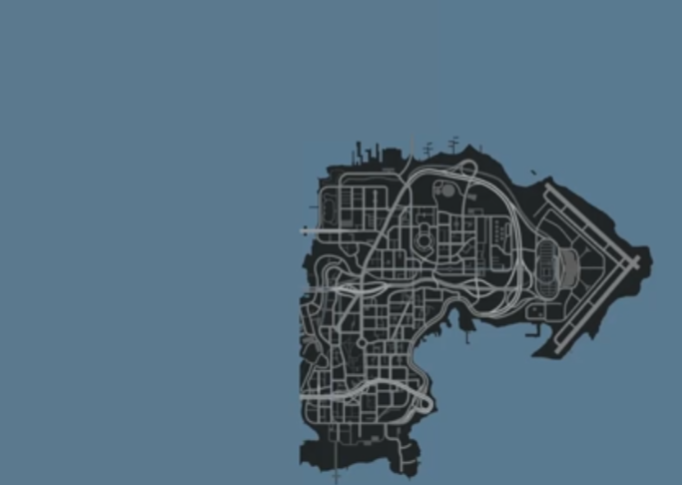
The reason why they do this is that they want you to get familiar with the island that you start off with. The story is tied to one specific point in the game map, and that is where the player should be.
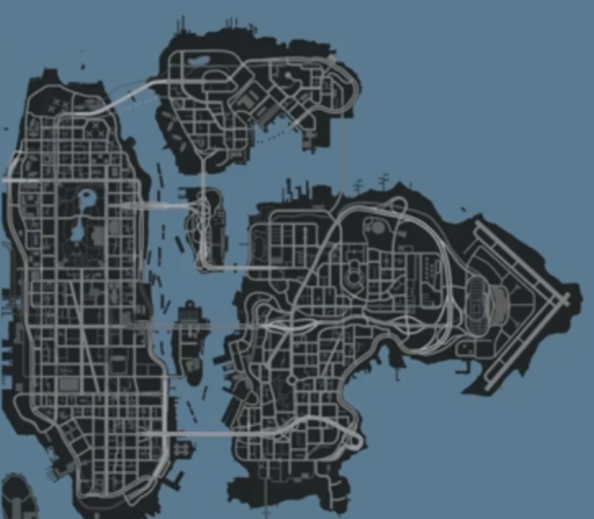
As the story expands, the player can explore other islands. This gives a player a chance to explore the starting island, as well as serving as a point of where the story can take place. This is how the game can drive the player in alinearway through the game story, and through the game world itself.
In "The Legend of Zelda: Breath of the Wild", you start offrestricted to one tiny area of the map. Once you complete a few dungeons and understand the game mechanics, you are then allowed to leave and explore other areas.
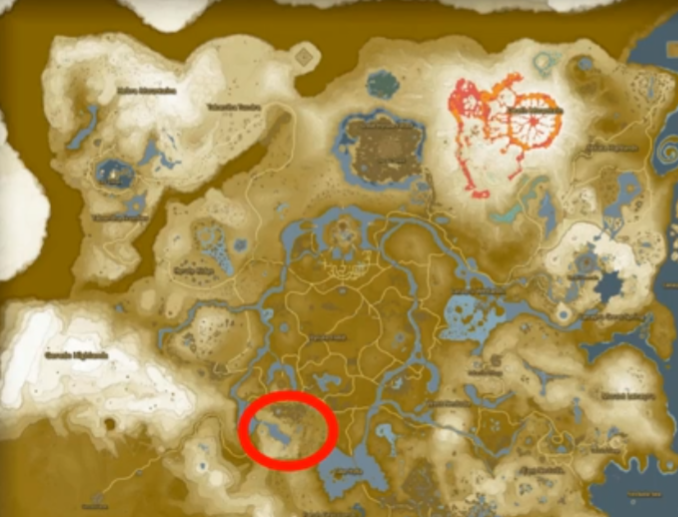
Level-based Progression
In "The Witcher 3", progression is guided through enemy difficulty/leveling. Once you get put into the main map, you can go wherever you want, but each area has a different level of enemies. So if you're walking around and encounter enemies that are higher level, the chances of you being attacked and dying increase as well. This will deter players from going to certain areas and keep them on the desired path.
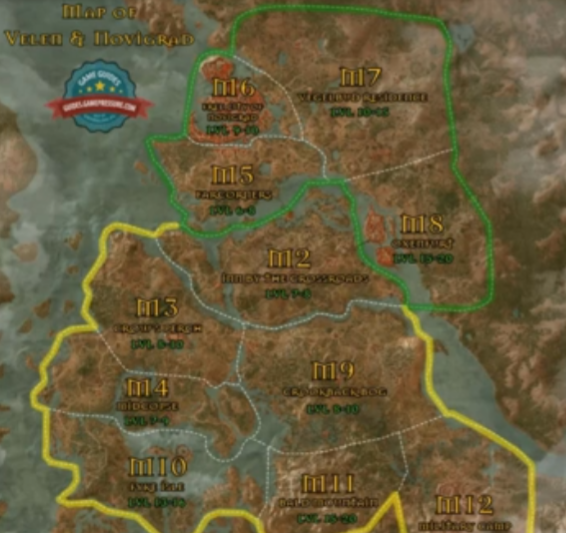
Resource-based Progression
Another example is "Minecraft"– although it is an open-world game, there is a fine control over where you go in what order, based on the items you need and the various differentresources that you need to collect.

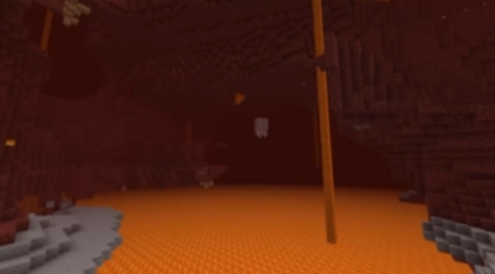
Landmarks
When you want your players to explore your world, the placement of landmarks is important. In "Skyrim", all the major cities are displayed with special icons showing that they're landmarks:
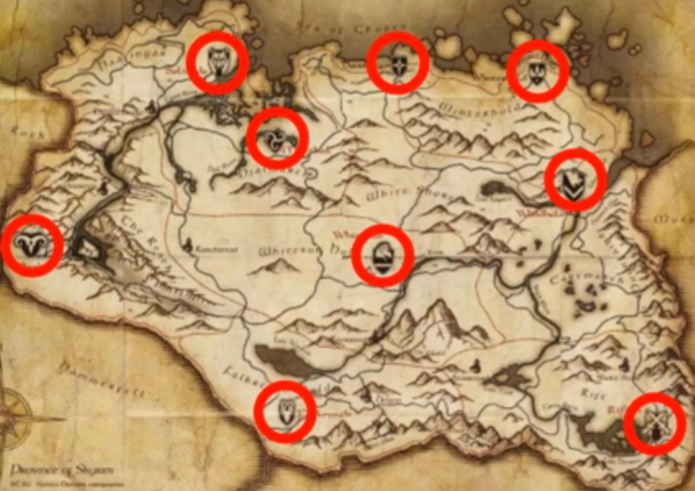
For a player navigating between these landmarks, they cover pretty much the entirety of the map. There are no areas that they may potentially miss.

In "GTA V", there are three main landmarks spread across the entire map, giving the players reasons to explore.
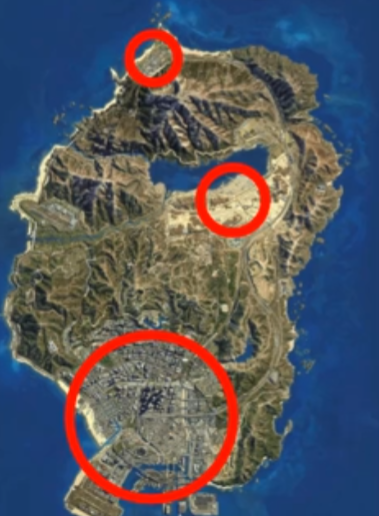
Barriers
Barriers can also help in guiding your player through your open world. The two types of barriers in level design are:
- Solid barriers – rigid obstacles that the player must follow or avoid
- Soft barriers – obstacles that are used to guide the player yet can be ignored
The most obvious examples ofsolid barriers are in racing games, where we have a strict path to follow, and barriers that prevent us from going off the map.
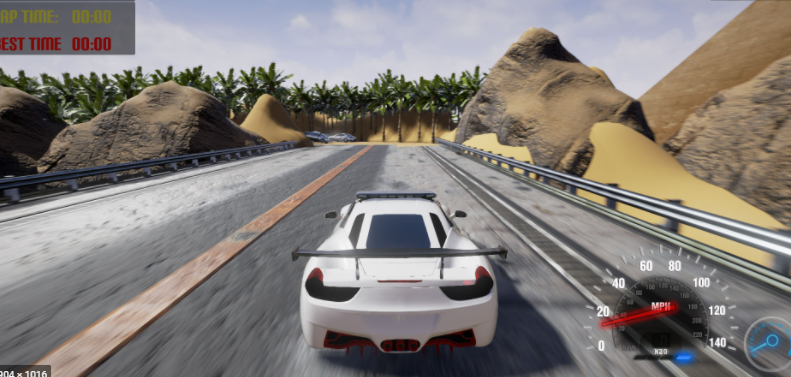
Castles are common examples of a solid barrier in games as they have specific entry points and exit points that the player must go through in order to enter/exit the castle.
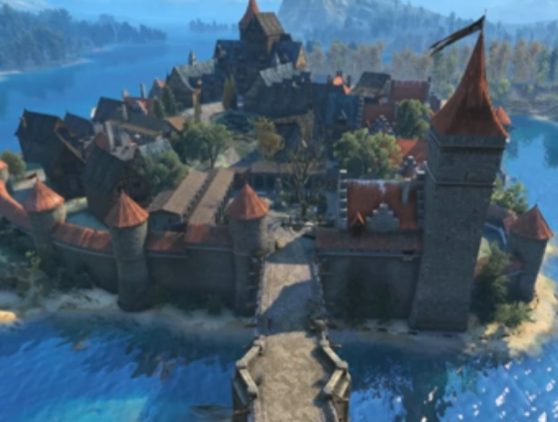
"Skyrim" has manysoft barriersin the form of an overhang near paths. These overhangs subtly guide the player along the path, but they can still be ignored and walked over.
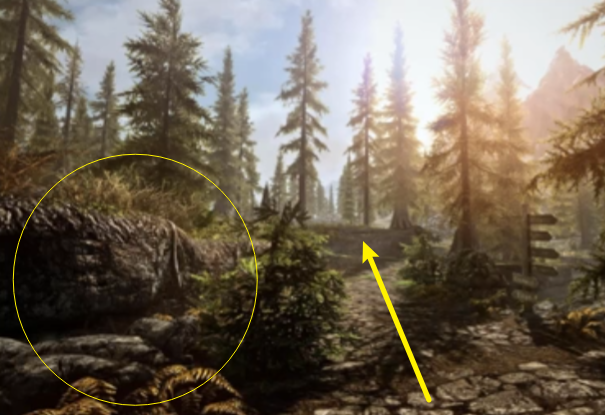
"Subnautica" uses thedepth of the ocean as a soft barrier to control the player's progression through the game. At the start of the game, you can only go so deep as your oxygen will run out, preventing you from going deeper until you get better equipment. When you level up your submarines, your oxygen tank gets larger and you can go deeper down the ocean.
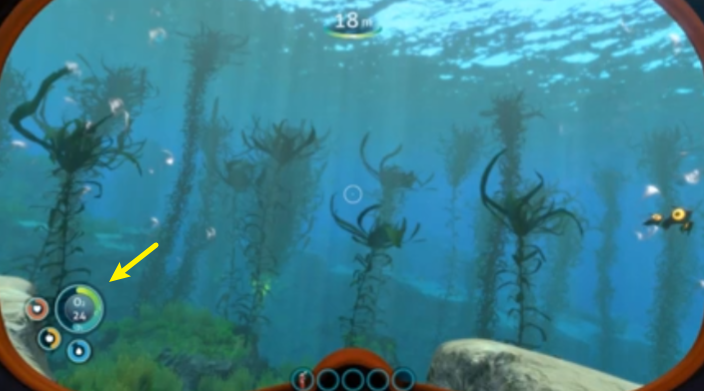
Transcript
When trying to tackle open world game design it can be quite difficult as unlike previous levels you may have created which are quite linear, open world are inherently open to the player and they have the freedom to go wherever they want.
So what we need to do is try and figure out how we can have a control over the player's progression through our open world, okay? Because the idea of an open world is that the player can travel anywhere they want at any time.
But while this is true, many open world games out there still have control over where the player goes in relation to progression. And by progression, I mean, progression through the story, or progression through the players' abilities, okay?
When they level up, when they get new items, when they become more powerful, okay? So, let's start by looking at an example. We have Grand Theft Auto IV. And when starting out in GTA IV, you can own the explore one island. You're basically stuck to this one island at the start of the game, okay?
And as you progress through the game, more and more islands get unlocked. Now, the reason why they do this, is because they want you to get familiar with the island that you start off with, okay? They don't want you to start off in the game and you have this entire world to explore. They don't want you to just start running off going everywhere, okay?
Because the story is tied to one specific point in the game map and that is where you should be. It gives the player both a chance to explore this starting island, you know, learning the streets, learning where different locations are, becoming familiar with it, as well as serving as a point of where the story can take place.
And then as the story expands, the player can then explore other islands, learn those. And this is how the game can sort of drive the player in a linear way through the game story and through the game world itself.
Now, another example is Legend of Zelda: Breath of the Wild. And in this game, you start off restricted to one tiny area of the map. And after you complete a few dungeons and understand the game mechanics, you are then allowed to leave, you're given the glider. So you can then exit this area and then explore the entire world, okay?
This starting area it gives you the knowledge of different tribes that run dungeons, how to play the game basically, how to defeat enemies. So when you go out into the world, you're well prepared.
Another example is The Witcher 3. Now in The Witcher 3, apart from the starting map, once you get put into the main map right here, you can pretty much go wherever you want, but the game still has a control over where you go overall, based on leveling.
Now, each area has different level of enemies. So if you're walking around and all of a sudden you are in an area where their enemies are double your level, you're not really gonna go in there, okay? Because the chances of you being attacked and dying is quite high.
So you can sort of stick to the area where you're most comfortable. And as you expand through the game, as you level up, you can go into more and more areas. And it relates to where the story is and where you go in the story. So this is how The Witcher 3 sort of guides you through their open world.
Another example is Minecraft. Now Minecraft is probably one of the most open world games you could say in that you can do anything at any time. But to progress through the main game, it is actually quite linear, okay?
There is a fine control over where you go and in what order, based on the items you need and the various different resources that you need to collect, okay? So even Minecraft is quite linear in how it actually guides you through the game as well.
Now, something we also need to keep in mind is landmarks, okay? Your players want to explore your world so the placement of important landmarks is quite important, okay? For example, let's look at Skyrim. As you can see, I have highlighted all the major cities in Skyrim and these can be considered landmarks, okay?
When you're exploring the world, you are either going in between these landmarks or you are going to different places that are very close by, okay? Because in Skyrim, these landmarks are important. They are where you get a lot of requests from. That's where you can sell your stuff. That's where you can buy stuff. There's lots of important things at these landmarks.
Now, look what happens when I draw a line between each of these landmarks, okay? For a plane navigating between these landmarks, they pretty much cover the entirety of the map. And there are no areas where they may potentially miss, okay?
There's no blank area, for example, if we got rid of rift in, that entire bottom right corner of the map would not really serve much of a purpose since there's no reason for the player to go down there. But the fact that there is a city down there, means that the player traveling in the area has a reason to go down there, okay?
Let's look at some other examples. We have GTA V, which has its three main landmarks going pretty much vertically. Again, you can think if the town at the top of the map was gone, then what purpose would there be for a player to explore up there? They wouldn't really be anything. So having these landmarks spread across the entire map gives the player a reason to explore and go around, okay?
Same with Red Dead Redemption 2. You can see, we have all our towns and cities spread across the map so that the player has a reason to explore over there.
Some other examples. We have Breath of the Wild and Oblivion. The Elder Scrolls games are pretty much great at doing this. As you can see, it's the same scarring that's spread evenly across the map. Same with Breath of the Wild.
And now not so good example is The Witcher 3, okay? The Witcher 3 on its main map, it has its three major landmarks, the two cities and the town, which are all at the top half of the map. Now, if you've played the game, you of course are familiar with these places and the top of the map. But I don't reckon you've really explored much of the bottom half, okay? Especially at the bottom left corner of the map.
Not many people really go down there. And that is because there's no major landmarks to actually find down there. There's no major places to go to, to sell your stuff, to buy your stuff. It's rather quite barren. So, next up, we need to be looking at barriers.
Now barriers are important to promote games as they can also help guiding your player through your open world. So, first of all, there are two types of barriers. You have solid barriers. And these are rigid obstacles which the player must follow or avoid. And then we have soft barriers. And these are used to guide the player, yet can be ignored, okay?
The player can choose to go through them, go over them. They're just there to lightly guide the player along a certain path. So first of all, solid barriers. The most obvious example would be in racing games where we have a strict path that we have to follow. And we have barriers on other side, basically stopping us from, you know, going off the map and driving wherever we want.
As well in games with castles. Castles have specific entry points and exit points that the player must sort of go through in order to enter and exit the castle, as well as pretty much any wall in any game, it's there to guide the player around it to a specific entrance.
Now what about soft barriers? Well, soft barriers, for example, in Skyrim over here we have a path that goes up straight head, yet to the left, we have a sort of overhang. Now this overhang is there to basically guide the player along the path and stop them from, you know, going off into the forest, but it's not strict, okay? We can choose to get over it and explore that way if we wish, but it's just there to subtly guide us along this road here so that we stay on track.
And Subnautica is a game set in the water, where you are a scuba diver and this also has soft barriers. But it's soft barriers are a bit more abstract. And that is actually the depth of the ocean, okay?
Progression through the game is basically how deep you can get. You know, when you level up your oxygen tank, when you level up your submarines, you can go deeper and deeper. Yet at the start of the game, you can only go so deep as your oxygen will run out. So that is a soft barrier. It is the depth of the ocean preventing you from going deeper and deeper until you get better equipment.
And just like in video games, there are solid and soft barriers all throughout the real world. Solid barriers are pretty obvious. Things like walls, things like gates. These are things that we can't go past yet are there in order to guide us around them.
And soft barriers in the real world are everywhere as well, okay? We have a sort of there's velvet ropes that we can technically go over, but we choose not to, as they are there to guide us along a certain path.
Wet floor signs. Most of the time when you see wet floor sign, you'll either be careful or try and go around it. These things we don't have to stick to their specific rules but they are there in order to guide us along a certain path, just like in video games.
So, thank you for watching. And that was just a bit on how we can look at progression through open world level design, okay?
As it is a very important factor in guiding your players through your open world, as what you don't really want to do is have an aimless open world, okay? You don't want to have an open world where the player has 100% total freedom as although that may seem as a good selling point, it won't give the player any reason to do anything, okay? So thank you for watching.
Interested in continuing? Check out our all-access plan which includes 250+ courses, guided curriculums, new courses monthly, access to expert course mentors, and more!
Related Posts
Video Game Map Design Tutorial
Source: https://gamedevacademy.org/level-design-open-world-tutorial/
Posted by: murraybehere.blogspot.com

0 Response to "Video Game Map Design Tutorial"
Post a Comment